April 27, 2017
Kate Rusby, “Life in a Paper Boat” • In her two decades-plus career, Rusby has never shown an inclination to stay with the tried-and-true. Hailed for her interpretations of traditional songs, she incorporated contemporary material – from songwriters as varied as Richard Thompson, Frank O’Connor, Iris DeMent, The Kinks’ Ray Davies, and Pee Wee King – used brass arrangements as well as conventional acoustic instruments for backing, gradually changed her core cast of accompanists, and perhaps most importantly, embraced her songwriting ambitions.
Which brings us to “Life in a Paper Boat,” her second album with husband Damien O’Kane in the producer’s chair. There’s both continuity and progression from her 2015 release, “Ghost,” which saw a more layered, elaborate presentation of Rusby’s music. Here, electric guitar, Moog synthesizer, percussion, and drum programming are as much of a presence as accordion, fiddle, double bass, and banjo. Rusby’s vocals are, again, often infused with a kind of airy reverb that, while lending a degree of sophistication to the sound, can also detract from the endearing intimacy and immediacy that marked her early work.
Yet, she is still Kate Rusby, so there is plenty to like, and to be intrigued by, on “Life in a Paper Boat.” Take the title track, a Rusby original. For the most part, her songs tend to favor themes and language found in folk tradition, making them feel universal and timeless. But “Paper Boat” was inspired by the plight of migrants and refugees who have made perilous treks across the water these past few years, and although there’s nothing overt in the lyrics to tie them to those tragedies, the inference is clear. The performance – Rusby’s classic tug-at-the-heartstring voice amid chiming electric guitar and synthesizer dialogues – is one of the album’s best.
“Only Desire What You Have” has familiar Rusby elements, like a rollicking rhythm, whistle solos by Michael McGoldrick (one of few holdovers from the Early Kate era) and a special guest male harmony vocalist – in this case Dan Tyminski (of Alison Krauss and Union Station, and “Man of Constant Sorrow” fame). Those who fondly recall Archie Fisher’s “Witch of the West-Mer-Lands” – a splendidly constructed and paced supernatural ballad – as a 1970s/80s coffeehouse staple (thanks in great part to the late Stan Rogers) should listen with an open mind to Rusby’s treatment: slower, pensive and atmospheric, yet still drawing out the vivid imagery in Fisher’s lyrics.
Among the traditional numbers, Rusby tinkers in typical fashion with “The Pace-Egging Song” while still locating its raison d’etre of ceremony and community, and does a quite chilling take on “Benjamin Bowmaneer,” a song of curious origins with lyrics that seem simultaneously child-like and forbidding.
Capping it all off is Rusby’s affectionately comic “Big Brave Bill,” about a rather different kind of working class hero than John Lennon had in mind, complete with bombastic brass. Although some of the arrangements and production take “Life in a Paper Boat” a bit close to the rocks at times, Rusby is as sure-handed as ever at the helm, and you won’t regret the journey. [katerusby.com]
Matthew Olwell, “CyberTrad”; IMLÉ, “IMLÉ” • Experimentation and innovation in traditional music goes back a long way – it’s arguably a tradition in and of itself. So you can look at these two recent recordings as part of the extensive body of work that brings centuries-old music and language forms in touch with ever-shifting cultural influences and trends.
Olwell is a West Virginia-based Irish musician who has also been active in contemporary folk dance-based performance, as a member of Footworks Percussive Dance Ensemble and then the Good Foot Dance Company, which he co-founded. It’s that dancer’s expansive view of music’s rhythmic dimensions which is at the core of “CyberTrad,” a collection of tunes and songs from Irish, Breton, and American traditions, along with originals by Olwell.
The most conspicuous feature on the album is the beat-boxing and vocal percussion of Dominic “Shodekeh” Talifero, which gives an urban funk and hip-hop gloss to the music, but the supporting instrumentation is notable: Simon Lepage’s electric bass, Aimee Curl’s upright bass, and Jaige Trudel’s cello provide the accompaniment for Olwell’s robust flute and cornemuse (French bagpipes); Olwell also plays bodhran, and Boston-area uilleann piper Joey Abarta appears on several tracks. In this framework – no guitar, bouzouki, or keyboard in the mix – although the melody still dominates, you’re more aware of the rhythm behind it, not only because of Talifero’s distinctive vocalisms but also the riffs, lines and fills from Lepage, Curl, and Trudel. And even though the beat is still there, of course, it’s enhanced, augmented, and redefined.
It’s on tracks like “The Killavil/Have a Drink with Me,” “Bal Plin/The Evil Fairy” and “Trip to Birmingham/Blackthorn Stick” where the premise is especially potent; of the songs, Curl’s takes on “Two Sisters” (with Talifero and the two basses in support) and “Bonny Irish Boy” work best, while Olwell’s renditions of “Pretty Saro” “and “By the Hush” tend to be less successful. But overall, “CyberTrad” has a sort of street-spontaneity vibe to it that can be quite infectious. [cybertrad.com]
IMLÉ has a different purpose in mind: bringing Irish Gaelic into a modern vernacular. Bassist Cian Mac Cárthaigh – inspired by a radio documentary he made on Welsh language and music – formed the band, enlisting singer-songwriter Fergal Moloney, musician and “punk poet” Marcus Mac Conghail and rapper MC Muipéad as its frontmen. The three deliver their songs, poems and raps in Gaelic, filtered through pop, indie rock, hip hop, and other contemporary stylings.
The idea of presenting Gaelic in a modern musical milieu is by no means new. Look no further than Clannad, which sang in Irish with an acoustic folk-rock backdrop, and later the ethereal new-age sound during its period of international success; or Iarla Ó Lionáird, for his work with Afro Celt Sound System and his solo efforts. IMLÉ, it can be said, is building on a very solid foundation.
Of course, if you don’t speak the language (no English translations are provided with the album), listening to IMLÉ presents a similar challenge as listening to any Gaelic singer – or for that matter, singers of any language with which you’re unfamiliar: You try to key in on the emotional content, and the melody of the song, to make a connection. The blunt, forceful temperament of rap and hip hop (“Críochfort,” “Fún Orm”) or grittiness of indie-rock funk (“Buail Aríst Mé”) might seem an unlikely fit for the language sung by a Joe Heaney or Nora Grealish, but there’s less of a reach with the slower, spare compositions (“Go Deo Go Deo,” “Síos an Bóthar”).
If IMLÉ is more about overall concept than follow-through, that’s fine. Considering how much Gaelic has endured down through the centuries – suppression, near-extinction – there’s no harm done here at all. [imle.ie]We Banjo 3, “String Theory” • With its fourth album, the Galway quartet (never mind the “3” in the name) continues its trailblazing promulgation of “Celtgrass,” a potent mix of Irish/Celtic and Americana that is personified in the Irish tenor banjo-playing of Enda Scahill and Martin Howley, as well as the cross-over fiddling by Scahill’s brother Fergal and the pop-inflected but folk-rooted vocals (not to mention crisp guitar work) by Howley’s brother David.
While “String Theory” is replete with the trademark WB3 bluegrass groove, old-timey swing, contemporary folk polish and Irish trad drive (sometimes all within the same track), there’s also an overall feeling of the band easing up on the gas pedal just a bit to broaden its range – a little less pyrotechnics, perhaps, but no shortage of virtuosity and excitement.
For example, the “Island Orchard” set starts off with Enda Scahill’s minor/modal “Killeany Jig” – Fergal and guest star double-bassist Trevor Hutchinson supply a moody bowed-string accompaniment – and transitions into a pair of old-timey reels, including a lovely harmonized fiddle-banjo-mandolin rendition of “Sally in the Garden.” “Chair Snappers Delight” opens with a Tennessean tune, “Happy Holler,” enlivened by a mandolin-guitar duet by the Howleys (with dobro by Feargal, who also plays viola, guitar, mandolin, and percussion on the album), and then shifts gears into a pair of trad Irish reels “The Wild Irishman” and “I’m Ready Now!” – the double banjo feature is in particularly good form here.
Of special note are the guest musicians, including the aforementioned Hutchinson, five-string banjo dazzler Alison Brown (“Good Time Old Time”) and vocalist Aoife Scott (Greg Brown’s “Ain’t Nobody Else Like You”). The brass section WB3 rolled out on their last album, “Live in Galway,” also is on hand for a few of the tracks, putting a charge into the “Aunt Jemima’s Plaster” set: the Quebecois tune “Sheepskins and Beeswax” followed by Irish reels “Ormond Sound” and “Marco’s.”
Once again, it’s the songs that affirm WB3’s joie de vivre, and make them such a delight. You can’t get much more upbeat than “Happiness” (written by Galway’s Noelie McDonnell), with the brass joyfully punctuating David Howley’s expressive voice. The band also has a go at the antebellum “Little Liza Jane,” adding some newly written verses to personalize the song, and the venerable old ballad “Two Sisters” which – despite its sorocidal plot – is far from despairing in their hands. On the more topical side, “This Is Home,” a David Howley-Enda Scahill composition, urges optimism and forward-facing vision to bring Ireland into a new age.
(Further evidence of We Banjo 3’s collective good cheer also is evident in the CD cover photos, which have a steampunk/Showtime-original-series vibe.)
That this band is now a fixture in the hearts and ears of Irish, and Irish-American, music lovers is fact, not theory. [webanjo3.com]
Michael Rooney and The Macalla Orchestra, “The Macalla Suite”; Peadar Ó Riada, “Onóir” • The 1916 Easter Rising centenary is over, but the retrospectives and musings about the milestone are likely to continue for some time, so it would seem quite appropriate to consider two more additions to the offerings of music inspired by the commemoration.
Rooney, a harpist, recently won TG4 Composer of the Year honors for “The Macalla Suite,” which he was commissioned to write for a special performance at an Irish state event for relatives of 1916 participants (the live recording here was made last fall in Monaghan). It’s the ninth suite he has composed; his other works include “The Famine Suite” (1997) and “The Millennium Suite” (2000).
The six movements of “Macalla” are a musical evocation of Irish history, the first two presenting the circumstances and succession of events over the century leading up to the Easter Rising; the next three recount the Rising itself and the immediate aftermath, while the sixth is an expression of reconciliation – including “The Queen’s Speech,” referring to Elizabeth’s 2011 visit to Dublin – and of a modern, cosmopolitan Ireland. Four traditional songs – including “The Bold Fenian Men” and “The Foggy Dew” – serve as interludes and historical markers. Altogether, it’s an impressive mélange of sounds and atmospheres, emotive and accessible yet also with some sophisticated, ambitious ideas and arrangements.
In “Clash of Traditions,” Rooney sets up contrasting pieces – a fife-and-drum melody redolent of the Ulster Volunteers, and a nationalist theme suggestive of the Irish Volunteers – and then plays them off one another. “Confusion” shifts between three different time signatures, depicting the chaotic crush of events (chiefly Roger Casement’s arrest and the on-again/off-again Irish Volunteers mobilization) on the eve of the Rising. Arguably the highlight of the suite is “The Battle,” which gradually builds tension and suspense until it lets slip the dogs of war.
The blend of traditional and classical music elements in “Macalla Suite” is further reflected in the make-up of the Macalla Orchestra itself, which features sections both for “fiddles” and “violins”; there are also sections of concertinas, uilleann pipes, harps, accordions, flutes – even banjos (other instruments include double bass, cellos, piano, trumpet, and French horn). Considering how cranky some of these instruments can be, the degree to which they mesh seems fairly remarkable, and of course reflects well on the musicians who play them. Not to be overlooked is Rooney’s canny use of percussion, whether a single bodhran, martial-like snare drums or a full-on rock-and-roll drum kit – one of those subtleties that help make “The Macalla Suite” as compelling as it is. [draiochtmusic.com/the-macalla-suite]
“Onóir” is the work of Peadar Ó Riada, son of Sean Ó Riada, who was a key figure in the 1960s Irish folk revival (he gets some credit for the formation of The Chieftains, for one thing). Peadar, host of a long-running radio program on RTÉ, has followed to some degree in his father’s footsteps, as a pianist, composer, and arranger incorporating classical and modern influences with traditional Irish music.
Unlike “Macalla,” “Onóir” (“honor”) isn’t structured around a chronology, but is rather a meditation on Ireland’s “Nation builders” and the evolution of Irish identity over time, conveyed through music, songs, and spoken word – both of the latter in Gaelic (no English translations are provided) – and with a cast of Téada, the duo of piper Mick O’Brien and harpist Oisín Morrison, and two choirs directed by Peadar Ó Riada: the all-female Cór Ban Chúil Aodha, which he also founded, and the all-male, multi-generational Cór Chúil Aodha, founded by his father.
Two poems by 1916 martyr Patrick Pearse have been set to music here by Ó Riada, who seeks to bring out the poet’s fervor and passion for redeeming the promise and sorrow in Irish history. Ó Riada reads (accompanied by Morrison and Téada bodhran player Tristan Rosenstock) a lengthy excerpt from “Fianna Éireann – An Tosach,” a retelling of stories from the Fianna cycle of early Irish literature that was written by Mons Pádraig Ó Fiannachta, who died during the recording of “Onóir.”
Elsewhere, Téada teams up with Morrison and O’Brien on three tracks of instrumentals composed by Ó Riada, while Cór Chúil Aodha performs its signature piece, the 18th-century Jacobite song “Mo Ghile Mear” (“My Gallant Daughter”) which Ó Riada posits as a paean to Ireland’s “independence and virility in the face of adversity.” The tracks with the choirs in fact lend a kind of liturgical quality to the proceedings and serve to invite the contemplation Ó Riada has in mind – it’s largely impenetrable to non-Gaelic speakers but beautiful nonetheless.
In interviews, Ó Riada has asserted that Ireland, in moving onwards and upwards as a nation, has suppressed the raw emotionality from the centuries of suppression and torment that preceded the Easter Rising. In that sense, “Onóir” is in a different place than “The Macalla Suite” which, while paying tribute to the 1916 heroes and their predecessors, also looks to resolution and moving on; Ó Riada seems to suggest that Ireland should take a good, long backward glance before doing so. [peadaroriada.ie/the-shop]
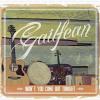 Gailfean, “Won’t You Come Out Tonight?” • In a perfect universe, all legendary Irish musicians would get to play together in an infinite number of different bands that would each release at least one album. As we know all too well, the universe isn’t perfect, but here is the latest “super group,” if you will, with three All-Ireland champions: Sligo-style fiddler Brian Conway; peripatetic accordionist John Whelan; and Máirtin de Cógáin, a masterful bodhran player, singer and storyteller. Rounding out the quartet is guitarist Don Penzien, who also has a distinguished resume as a festival organizer (notably CelticFest in Mississippi).
Gailfean, “Won’t You Come Out Tonight?” • In a perfect universe, all legendary Irish musicians would get to play together in an infinite number of different bands that would each release at least one album. As we know all too well, the universe isn’t perfect, but here is the latest “super group,” if you will, with three All-Ireland champions: Sligo-style fiddler Brian Conway; peripatetic accordionist John Whelan; and Máirtin de Cógáin, a masterful bodhran player, singer and storyteller. Rounding out the quartet is guitarist Don Penzien, who also has a distinguished resume as a festival organizer (notably CelticFest in Mississippi).
“Won’t You Come Out Tonight?” is one of those albums where the amicability and good cheer are as easy to discern as the outstanding musicianship. The melodic interplay between Conway and Whelan is a thing of beauty – on a pair of hornpipes (“The Cuckoo/The Western”), for instance, or reels like “The Whistling Postman/Berehaven,” or the trio of slip jigs that includes the old favorite “Hardiman the Fiddler.” Each gets a turn alone, Conway on a medley that begins with his lovely treatment of the air “The Bonny Bunch of Roses” and segues into the reels “Redican’s Bow” and “Seán sa Cheo” (Penzien’s guitar is a welcome presence throughout); Whelan powers through a trio of reels (“Finbarr Dwyer’s/Tom Ward’s Downfall/The Maid I Ne’er Forgot”) with typical aplomb.
The vocal selections are equally pleasing, thanks to de Cógáin’s range and hearty tone, not to mention a fine choice of material, including “Nil na Lá (Daybreak Has Not Come),” a Cork ditty in the guest-who-just-won’t-leave vein, around which Conway and Whelan delightfully wrap a Larry Redican-composed reel, “Kathleen’s Fiddle”; “Heenan & Sayers,” which recounts a famous 19th-century boxing match with all the swagger and bravado you’d want in a sporting ballad; “Óró, Sé Do Bheatha ‘Bhaile,” one of Ireland’s most stirring patriotic anthems, Patrick Pearse’s rewrite of an older Jacobite song; and “Castle Hyde,” a tribute to a grand Cork estate so absurd in its excessive praise that the proprietor was convinced the song had been written as a mockery.
Not only does Gailfean have gobs of talent and experience, but also a good creation story: They were stranded together at an Irish retreat in Texas during Hurricane Sandy and did an impromptu performance, which inspired them to make a go of it (“Gailfean,” appropriately enough, is Gaelic for “rough weather”). No, the universe isn’t perfect, but it does get some things right here and there. [gailfean.com]
 Marco Fabbri, “Crossroads”; Michel Balatti, “The Northern Breeze”; Tommaso Tornielli, “1st” • Over the years, this space has given regular attention to the remarkable amount of Irish/Celtic music coming from Europe, as exemplified by bands such as Germany’s Cara and France’s Doolin. Italy has it going on, too, as this trio of recent recordings attests – and we’re not talking about renditions of “The Wild Rover” or “Fields of Athenry” with Neapolitan accents. These musicians have immersed themselves in the tradition and done the work to pick up its nuances and details. They’ve also been keeping quite impressive company: Guest stars on these albums include worthies like Oisin Mac Diarmada, Kevin Crawford, Nuala Kennedy, Sean McElwain, Caitlín Nic Gabhann, Junior Davey, and Paul and John McSherry; but it bears mentioning that plenty of the supporting musicians also are Italian, and equally deserving of praise.
Marco Fabbri, “Crossroads”; Michel Balatti, “The Northern Breeze”; Tommaso Tornielli, “1st” • Over the years, this space has given regular attention to the remarkable amount of Irish/Celtic music coming from Europe, as exemplified by bands such as Germany’s Cara and France’s Doolin. Italy has it going on, too, as this trio of recent recordings attests – and we’re not talking about renditions of “The Wild Rover” or “Fields of Athenry” with Neapolitan accents. These musicians have immersed themselves in the tradition and done the work to pick up its nuances and details. They’ve also been keeping quite impressive company: Guest stars on these albums include worthies like Oisin Mac Diarmada, Kevin Crawford, Nuala Kennedy, Sean McElwain, Caitlín Nic Gabhann, Junior Davey, and Paul and John McSherry; but it bears mentioning that plenty of the supporting musicians also are Italian, and equally deserving of praise.
A native of Rome, Fabbri began playing fiddle in 1980 and spent a considerable amount of time in Belfast, joining the group Ultan and touring the continent with them. He also recorded with the unique Italian world/electronica/Celtic-fusion band Fiamma Fumana. Reflecting the extent of Fabbri’s travels, “Crossroads” is the most wide-ranging of these three albums, including music from Italian, Breton and English traditions as well as Irish. Fired by his crisp, authoritative playing across the different genres and contexts, “Crossroads” abounds with Irish music from distinguished pedigrees, including tunes composed by Sean Ryan (“Shamrock Hill”; “Ar Mhuin na Muice”), Thomas Lynch (“The Brit in the Liffey”), Charlie Lennon (“Master Seamus”) and Siobhan Peoples (“Lochlann’s”), or learned from the work of Laurence Nugent (“Return Home”), Gerry O’Connor (“Launching the Boat,” “The Mohill”) and Christy Leahy (“Johnny the Tailor’s Fancy”), among others.
These nestle alongside the Breton tune “Suite Fisel,” a Northwest English hornpipe paired with a clog dance tune from Nova Scotia, a French perigodrino composed by violinist Niccolo Paganini, a Sicilian waltz and a couple of tarantellas – plus a traditional dance from the Bolognese Apennines he repurposes as a reel. With his lengthy list of musical friends, Fabbri sets the right mood and tone for each track: A vigorously rendered set of jigs with the McSherrys sounds straight from a cracking good pub session, while “Tarantella Nicodemo” – with Felice Zaccheo on mandola and Maurizio Geri on nylon-string guitar – resonates with a classical/Mediterranean ambiance. [claddaghrecords.com/index.php/instruments/fiddle/marco-fabbri-croassroads.html]
Tornielli has played flute and whistle with The Clan, an Italian Celtic punk band, but is best known for his appearances (with the likes of Mac Diarmada and Crawford) at the Eire! International Festival in Bonedo. His tone and overall command of the instrument are quite extraordinary – the jig set “Wishing Well/Apples in Winter” and a slip jig/reels combo (“Broose and Butter” followed by his compositions “Crazy Glass” and “Interence”), as well as a pair of hornpipes, are highlights, as is his set with Mac Diarmada on fiddle and McElwain on guitar and bouzouki.
Balatti started out as a classical-style flautist but about 15 years ago decided to devote himself to the Irish flute and whistle tradition, and so he lived in Ennis, Co. Clare, for an extended time to get acclimated. He wound up joining The Birkin Tree, a pioneering band made of up fellow Irish music-loving Italians that has played with folks like Liam O’Flynn, Martin Hayes and Niamh Parsons (Balatti also is one of the few flutists in the traditional Italian music scene). Sound-wise, “Northern Breeze” is spare compared to the other two albums, Balatti backed primarily by guitarist Michael Bryan and Fabio Biale on bodhran and piano. Some of the sets (“Coleman’s March/Piper’s Maggot/The Crooked Road”; “The Humours of Giulia” set, all written by him) are a little reminiscent of Flook; there’s also a lovely duet with harpist Elena Spotti on the O’Carolan piece “Eleanor Plunkett” and quite a few ebullient flute-guitar-piano trios, notably the jig medley “Agata/Adam and Eve.” [michelbalatti.com]
At a time when one can speak of Irish/Celtic music as a global phenomenon, it’s important to see that not in terms of big, glitzy international pop spectacles – where “Celtic” functions as a brand name – staged in huge concert halls, broadcast on TV and, ultimately, disseminated via DVD. Instead, look – or rather listen – to the Marco Fabbris, Tommaso Torniellis and Michel Balattis, who embrace and understand the tradition in its most basic forms. Che bello.
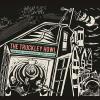 John Blake, Mairéad Hurley and Nathan Gourley, “The Truckley Howl” • The title of this album – also now the name of the trio that recorded it – merits some consideration, especially given that it refers to a quote by one of Irish music’s enduring figures, Seamus Ennis, who once offered this as an overview to understanding Irish tradition: “First, you must learn the talk. And then you must learn the grip. And after that, you must learn the truckley [sic] howl.” His point was that acquiring the lexicon, figuring out the notes to each tune or song, and getting the hang of the fiddle, pipes, accordion, or whatever instrument, gets you only so far in Irish music; the last part is being able to grasp, and convey, the arcane intangibles of the music – allowing yourself “to get swept up in the moment” might be the best 21st-century equivalent.
John Blake, Mairéad Hurley and Nathan Gourley, “The Truckley Howl” • The title of this album – also now the name of the trio that recorded it – merits some consideration, especially given that it refers to a quote by one of Irish music’s enduring figures, Seamus Ennis, who once offered this as an overview to understanding Irish tradition: “First, you must learn the talk. And then you must learn the grip. And after that, you must learn the truckley [sic] howl.” His point was that acquiring the lexicon, figuring out the notes to each tune or song, and getting the hang of the fiddle, pipes, accordion, or whatever instrument, gets you only so far in Irish music; the last part is being able to grasp, and convey, the arcane intangibles of the music – allowing yourself “to get swept up in the moment” might be the best 21st-century equivalent.
Such is the collective aspiration of The Truckley Howl, whose members are current Boston resident Nathan Gourley (fiddle, guitar); Sligo concertina player Mairéad Hurley; and London guitarist, pianist and flutist John Blake. Masterful musicians all with years of performing experience behind them, the trio plays 14 tracks’ worth of tunes – collected from assorted printed sources, and both private and commercial recordings – with obvious technical proficiency yet also an attentiveness to those aforementioned indefinables of the music.
If you follow their lead, you will surely experience these epiphanies of grace at various points along the way. Sometimes it’s the traits of the instruments, separately or together – the brashness of Hurley’s concertina, the fluidity in Gourley’s fiddle, the airiness of Blake’s flute – and sometimes it’s the tune, or a part of one. Like their set of two hornpipes from the O’Neill Collection, in particular the second one, “The Mountain Top,” with its distinctive D-B-D-A-D motif in the second part. Or, in one trio of reels, the transition from “Papa’s Set” to the inimitable “Spike Island Lasses” and its shift in mood and temperament. Or that little hitch in the jig “The Clare Shout.” Even an off-the-beaten-path entry, “The Spanish Fandango” (which sounds rather like an O’Carolan tune filtered through Galicia), achieves this transcendence.
“The Truckley Howl” is essentially an invitation to appreciate Irish music as greater than the sum of its parts. And not to get too sloppy sentimental here, but somewhere Seamus Ennis is probably nodding his head in approval. [thetruckleyhowl.com]
 Lau, “The Bell That Never Rang” • A friend of mine once called Lau the Emerson, Lake, and Palmer of Celtic music. Not that this Scottish trio uses massive Moog synthesizers or a drum kit big enough to need its own 18-wheeler transport, but much like the seminal 1970s progressive rock band they have become known for their powerful and increasingly experimental sound. This six-track album sees Lau – Kris Drever (guitars, vocals), Martin Green (accordion, electric piano, electronics), Aidan O’Rourke (fiddle) – move farther away from its early incarnation, which had a somewhat more traditional-based format, albeit with plenty of contemporary elements.
Lau, “The Bell That Never Rang” • A friend of mine once called Lau the Emerson, Lake, and Palmer of Celtic music. Not that this Scottish trio uses massive Moog synthesizers or a drum kit big enough to need its own 18-wheeler transport, but much like the seminal 1970s progressive rock band they have become known for their powerful and increasingly experimental sound. This six-track album sees Lau – Kris Drever (guitars, vocals), Martin Green (accordion, electric piano, electronics), Aidan O’Rourke (fiddle) – move farther away from its early incarnation, which had a somewhat more traditional-based format, albeit with plenty of contemporary elements.
It is Drever, a firmly established and acclaimed songwriter as well as a justly praised singer, whose imprint is especially profound here – the lyrics in all six songs are his, cerebral, nuanced, and sometimes wry and pointed. So there’s an indie-rock kind of feel to much of the album, Drever’s jangling electric guitar set beside O’Rourke’s swirling fiddle lines and the rhythmic ballast of Green’s piano accordion, such as on the sardonic “Death of the Dining Car.”
The full range of Lau’s artistic capabilities – including the Emerson, Lake, and Palmer parallel – are on display in the epic (17-minute-long) title track, which was commissioned for performance at Glasgow’s Celtic Connections Festival and takes its name from a detail in the city’s coat of arms. It begins with a movement played by the Elysian String Quartet, swinging between fully formed phrases and atonal or distorted passages as Drever, Green, and O’Rourke variously enter, building up into a chaotic storm of sounds, some of them electronically manipulated. Gradually, the tempest abates until Drever and O’Rourke lead the transition into the centerpiece, a languidly paced meditation on ephemerality and the struggle, or acquiescence, it engenders within us. The song’s climax is a multiple refrain, “No one knows when you’ll go/and no one thinks to tell you,” in which Drever’s and guest vocalist Joan Wasser’s voices are gradually replicated like a growing chorus of the departed – it’s incredibly sublime and a bit eerie at the same time.
The multiple-refrain device also appears in “Back in Love Again,” which opens with some intricate, bluesy acoustic guitar picking by Drever and then begins to gather steam, Green and O’Rourke playing a swift counter-melody as Drever and Wasser sing “We fall out/and we fall back in love again.” Progressing to almost the height of absurdity, the repetition of the phrase might nonetheless prompt some musings (or maybe it won’t, but there is some good fodder for car or dinner conversation): How many times can we fall out and back in love? Is the “we” all-inclusive, or just pertaining to the song’s narrator(s)? Can life, or a specific relationship, be so easily reduced to this stark emotional ebb-and-flow?
Ending the album is “Ghosts,” which appeared on an earlier recording by the band and – in light of recent years’ events – has taken on some new relevance what with its allusions to immigration and assimilation (“I’m not an incomer/My parents were ghosts/Sir, I was born here/So where would I go?”). Enfolded by a melody in a comforting, almost-but-not-quite waltz time, the song evinces a quiet but firm defiance.
“The Bell That Never Rang” (album and track both) may be challenging to some, especially those with minimal tolerance for dissonance and experimentation, but the adroitness of Drever’s writing and singing, and the trio’s collective force of personality, make a compelling case to give Lau a listen. [lau-music.co.uk]
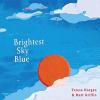 Teresa Horgan and Matt Griffin, “Brightest Sky Blue” • Horgan, a Cork native, is perhaps best known these days as lead singer and flutist for intercontinental pan-Celtic band The Outside Track, while Griffin – a Londoner now settled in West Kerry – has played guitar and other related instruments in several collaborations, notably with singer-accordionist Méabh Ní Bheaglaoich (they released a fine album, “Cuisle,” in 2015).
Teresa Horgan and Matt Griffin, “Brightest Sky Blue” • Horgan, a Cork native, is perhaps best known these days as lead singer and flutist for intercontinental pan-Celtic band The Outside Track, while Griffin – a Londoner now settled in West Kerry – has played guitar and other related instruments in several collaborations, notably with singer-accordionist Méabh Ní Bheaglaoich (they released a fine album, “Cuisle,” in 2015).
Their CD is a mix of traditional-contemporary material that seems pretty typical for an Irish female singer’s album in this day and age, but that’s selling Horgan and Griffin a little short, because “Bright Sky Blue” makes for perfectly pleasant listening: She’s got a lovely voice, trad-based but with a tint of folk/pop/country stylings that work well for a versatile repertoire; Griffin is practically a one-man show, adding bass, mandolin, and bouzouki to his exceptional acoustic and electric guitar-playing. Among the supporting cast is Pauline Scanlon (part of the vocal duo Lumiere), who contributes backing vocals on several tracks, and Niamh Varian Barry (formerly of Solas), playing fiddle and viola.
There are some familiar entries, such as “Cruel Sister” (by way of Pentangle), “Fair Flowers of the Valley” (via Tim O’Brien), Leon Rosselson’s populist rouser “The World Turned Upside Down,” covers of Paul Simon (“Kathy’s Song”) and John Martyn (“Sandy Grey”), as well as “As I Roved Out,” with surely one of the more glorious melodies in Irish traditional song – and Horgan and Griffin do justice to them all, particularly the latter. Less known, perhaps, is English singer-songwriter David Wood’s “May the Kindness” (deserving of a place in the folk/acoustic pantheon of latter-day inspirational songs) and the title track, by Donegal’s Ian Smith – a cautionary tale in which moments of anger lead to, literally, a lifetime of regret.
Horgan’s instrumental prowess also gets a cameo, in a set that opens with a Breton tune, “Dans en Dró,” on multi-tracked flutes (displaying some outstanding ornamentation and harmonies), and goes into “The Roscommon Reel.” Put this in the “worth a listen” column.
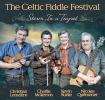 Celtic Fiddle Festival, “Storm in a Teapot” • Still they soldier on, closing in on 25 years and with yet another lineup change – but there’s no reason to shut down this quartet, which continues to retool and revitalize itself while purveying the glories of fiddle traditions stretching from Canada through Ireland and the British Isles to France, and even elsewhere.
Celtic Fiddle Festival, “Storm in a Teapot” • Still they soldier on, closing in on 25 years and with yet another lineup change – but there’s no reason to shut down this quartet, which continues to retool and revitalize itself while purveying the glories of fiddle traditions stretching from Canada through Ireland and the British Isles to France, and even elsewhere.
On this, their seventh album, Celtic Fiddle Festival re-introduces a Scottish dimension, one it hasn’t had since the death of co-founder Johnny Cunningham in 2003 – with the addition of Charlie McKerron, a longtime member of Capercaillie. He joins charter members Kevin Burke of Ireland and Breton Christian Lemaitre, along with Breton guitarist Nicolas Quemener, who took on the role of what the band calls “the fiddlers’ laborer” prior to their last release in 2013, “Live in Brittany.” Gone is Quebec’s André Brunet, now part of a thoroughly illustrious roster of CFF alumni: Soig Siberil, Ged Foley, Tony McManus and the late John McCann, as well as Cunningham.
As before, each fiddler has an opportunity to showcase his particular music tradition and style: Lemaitre, for example, offers up a stirring medley of four tunes from Southern Brittany, including one using an unusual scale from old wind instruments; Burke takes a spin on a trio of reels (“John McFadden’s/Maura Connolly’s/The Sailor on the Rock”) and two Turlough O’Carolan compositions (“Planxty Burke/Thomas Burke”); and McKerron does the classic Scottish MSR (march-strathspey-reel) combo, “Atholl Highlanders March to Loch Katrine/Earl Grey/Marquis of Tullybardine.”
But it’s the group performances that show the quartet’s full capabilities, adapting to the characteristics, textures, and quirks of each tradition with alacrity and quite apparent ease, sometimes playing in unerring unison, other times in unfathomably gorgeous harmony: such as on “Dans Fisel,” a medley of Central Brittany tunes used for a distinctive form of gavotte, with all manner of rhythmic turns and repeating phrases that are as exciting to listen to as they must be to dance to; “Ricardo Portela/Muinera,” a pair of tunes from Galicia, the Celtic kingdom’s Spanish territory; and a multi-tradition reel set that begins with “Noctambule,” a composition of Quemener’s brother, followed by “Love at the Endings” by renowned Irish fiddler Ed Reavey, and then ends with one of those quintessentially rugged, accented Scottish pieces, “Iain MacPherson’s.”
Quemener, who does yeoman’s work fitting accompaniments to all these different styles and sounds, gets some well-deserved turns in the spotlight, too, including a solo piece where he tackles another fisel to mesmerizing effect.
One definition of “festival” refers to it as “a periodic commemoration or celebration.” When CFF began back in 1993, the concept of crossing folk traditions or genres, while hardly new, was nowhere as fully formed as it is nowadays. So having a Celtic Fiddle Festival tour and album every few years serves to celebrate something that’s turned out to be a pretty good idea – and to celebrate a band that helped make it so. [celticfiddlefestival.com]
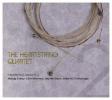 The Heartstring Quartet, “Heartstring Sessions 2” • The long-awaited follow-up to their 2008 release, and the reason it took so long is evident when you look at the membership, which consists of two pairs of spouses, all accomplished performers on their own in the Irish/Celtic domain: Máire Ní Chathasaigh and Chris Newman, and Ní Chathasaigh’s sister Nollaig Casey and Arty McGlynn. Between their various individual projects and collaborations, plus whatever opportunities they have to tour in their respective marital duos (both have been through the Boston area during the past year-and-a-half), just getting them into a recording studio would seem a major achievement.
The Heartstring Quartet, “Heartstring Sessions 2” • The long-awaited follow-up to their 2008 release, and the reason it took so long is evident when you look at the membership, which consists of two pairs of spouses, all accomplished performers on their own in the Irish/Celtic domain: Máire Ní Chathasaigh and Chris Newman, and Ní Chathasaigh’s sister Nollaig Casey and Arty McGlynn. Between their various individual projects and collaborations, plus whatever opportunities they have to tour in their respective marital duos (both have been through the Boston area during the past year-and-a-half), just getting them into a recording studio would seem a major achievement.
“Heartstring Session 2” is full of fun and whimsy as well as elegant sounds and seriously vigorous playing. It’s as if you’re at an intimate dinner with two couples of considerable, wide-ranging tastes, and the conversation touches on The Marx Brothers, poetry, mid-20th century Nashville fiddling, the Jacobite Rebellion, and baroque music.
There’s so much to admire here, whether it’s Casey’s assured fiddling (“Sunny Hills of Beara/Fox in the Thatch”; “The Connaught Heifer/Over the Hills/The Boys of Portaferry”; “Bearnas Barn Waltz,” her ode to Cork poet John O’Leary) or Ní Chathasaigh’s agile, unique harp-playing (“Molly McAlpine”; “Willie Taylor”); McGlynn and Newman give guitar aficionados plenty to rejoice, with their masterful rhythm and lead exchanges – such as on “Cherokee Shuffle” or the “Connaught Heifer” set (both of which also feature Newman on mandolin), as well as Newman’s “Narrow Roads and Wide Horizons” – that display their various influences from not only Irish but also American traditions as well as rock and jazz.
Casey’s soulful singing also is in the spotlight, vis-a-vis the much-covered Irish/British ballad “Willie Taylor” and “Éamonn a’ Chnoic,” a lament in Gaelic about a Tipperary aristocrat who becomes entangled in the Jacobite cause.
Oh yes, the fun and whimsy: Well, there’s “When I Take My Sugar to Tea” – which premiered in “Monkey Business” (one of Chico’s piano solos) but acquired a life of its own – with McGlynn and Newman laying down some jazzy backing for Casey’s sultry vocals, and a breathtaking arrangement of the allegro from Violin Sonata in F Major by George Handel, here titled “Flying Off the Handel,” (see what they did there?). Actually, the whole thing is a feel-good exercise, just listening to McGlynn and Newman playing off against one another, or Ní Chathasaigh at the front on “Cherokee Shuffle,” or Casey dueting with her brother-in-law (“Over the Hills”) and sister (“The Boys of Portaferry”) in the same reel set. The most important part of “Heartstring” is “heart.”
[www.heartstringquartet.com]
The two holiday-themed albums below arrived just a hair late for inclusion in last month’s column, but certainly bear consideration for next December – or perhaps even before then:
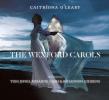 Caitríona O’Leary, “The Wexford Carols” • O’Leary melds Irish traditional music with early-music and classical styles and sounds. For a number of years she has researched the Wexford caroling tradition, which derives in great part from the poems of Luke Waddinge, a bishop in Co. Wexford during the 17th century, and the 1728 collection of Christmas songs by Fr. William Devereux. On this album – re-released two years after its debut – she brings new luster to these carols, with the help of an impressive, if unlikely cast of collaborators: country rock/folk/blues singer-songwriter Rosanne Cash, daughter of Johnny; Rhiannon Giddens, former lead vocalist for the Carolina Chocolate Drops, active in American and Celtic music; and Tom Jones. Yes, that Tom Jones, he of “What’s New Pussycat,” “It’s Not Unusual,” “Delilah” and other major hits.
Caitríona O’Leary, “The Wexford Carols” • O’Leary melds Irish traditional music with early-music and classical styles and sounds. For a number of years she has researched the Wexford caroling tradition, which derives in great part from the poems of Luke Waddinge, a bishop in Co. Wexford during the 17th century, and the 1728 collection of Christmas songs by Fr. William Devereux. On this album – re-released two years after its debut – she brings new luster to these carols, with the help of an impressive, if unlikely cast of collaborators: country rock/folk/blues singer-songwriter Rosanne Cash, daughter of Johnny; Rhiannon Giddens, former lead vocalist for the Carolina Chocolate Drops, active in American and Celtic music; and Tom Jones. Yes, that Tom Jones, he of “What’s New Pussycat,” “It’s Not Unusual,” “Delilah” and other major hits.
Supporting the quartet is a group of musicians led by the inimitable Donal Lunny of Planxty and Bothy Band fame on bouzouki, along with fiddler Adrian Hart, Éamonn de Barra (flute, whistle), John Smith (guitar, mandola), Mel Mercier (bodhran, bones) and drummer Graham Hopkins, among others.
The result is a refreshingly sublime, graceful, and accessible mesh of folk and sacred music, with the feel of a global village Christmas celebration. Most of the tracks feature duets, trios, or the full quartet, but each singer has the opportunity to display her or his distinctive personality: O’Leary’s angelic voice soars majestically over “Tell Shepherds,” while Giddens bestows an earthy, gospel/spiritual dynamic on “Christmas Day Is Come” (Gidden also plays fretless banjo on a couple of tracks) and Cash’s exquisitely gentle, lower-end alto on “Behold Three Kings” carries a hint of Nashville that entwines delightfully with strings and flute; Jones sometimes sounds as if he’s reining himself in, but his pop style works just fine on “The Angell Said to Joseph Mild.”
The musical accompaniment is simply outstanding, festive or contemplative where appropriate, with eclectic influences suggestive of Irish trad and chamber music, among other things – ancient sounds filtered through modern sensibilities, and charged through with the percussion from Hopkins and Mercier.
The closing track has all four singers on “The Enniscorthy Carol,” probably the most familiar of the Wexford carols, an appropriate coda for an album steeped in history and flush with invention. [caitrionaoleary.com]
Natalie MacMaster and Donnell Leahy, “A Celtic Family Christmas” • Albums like this defy the conventional review process: A pair of traditional musicians as gifted as spouses MacMaster and Leahy certainly have earned a goodly amount of leeway, so if they want to have a bit of fun with family and friends, well, who are crusty music journalists to harrumph about it? Anyway, the pair lend their fiddle skills to Cape Breton/Canadian maritime-flavored arrangements of classic Christmas numbers like “Angels We Have Heard on High,” “Joy to the World,” “Good King Wencelas” and “What Child Is This,” occasionally interspersed with Irish, Scottish or Cape Breton tunes ( “Christmas Eve,” “Put Me in a Box,” “Star of Munster”).
Yes, some of the album is on the sappy side, but there’s loads of Yuletide energy, especially from pianist Mac Morin, especially on the snappy, jazzy “White Christmas.” The couple’s kids make a cameo, singing on a medley beginning with “Up on the House Top” (they also play fiddles) and on “Silent Night,” which includes Gaelic verses. The family Christmas party atmosphere comes to the fore on “The Twelve Days of Christmas,” with increasingly silly variations on the “five golden rings” refrain. What the heck – it only comes once a year, after all. [acelticfamilychristmas.com]
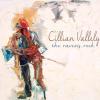 Cillian Vallely, “The Raven’s Rock” • “About time!” exults a grateful Irish music nation. After some 20 years of showing himself to be one of the finer uilleann pipers of his generation – through his work with Lúnasa and luminaries ranging from Bruce Springsteen to Tim O’Brien to the Prague Philharmonic Orchestra – and appearing on more than 60 recordings, the Armagh-born Vallely has at last released his first solo album. Its 10 tracks not only showcase his piping but his brilliance on whistle and low whistle, the latter instrument for which he can arguably be credited as helping popularize. Just as importantly, “Raven’s Rock” represents a furthering of the Vallely family imprint on traditional music in Armagh: His parents founded the Armagh Pipers’ Club, which helped to sustain and invigorate traditional music in that area, and provided no small inspiration for those of younger generations, including Vallely himself.
Cillian Vallely, “The Raven’s Rock” • “About time!” exults a grateful Irish music nation. After some 20 years of showing himself to be one of the finer uilleann pipers of his generation – through his work with Lúnasa and luminaries ranging from Bruce Springsteen to Tim O’Brien to the Prague Philharmonic Orchestra – and appearing on more than 60 recordings, the Armagh-born Vallely has at last released his first solo album. Its 10 tracks not only showcase his piping but his brilliance on whistle and low whistle, the latter instrument for which he can arguably be credited as helping popularize. Just as importantly, “Raven’s Rock” represents a furthering of the Vallely family imprint on traditional music in Armagh: His parents founded the Armagh Pipers’ Club, which helped to sustain and invigorate traditional music in that area, and provided no small inspiration for those of younger generations, including Vallely himself.
The familial ties are apparent in other, magnificent ways on “Raven’s Rock,” in the presence of Vallely’s brothers Niall (concertina) and Caoimhin (piano), both of whom have enjoyed their own success. And the Vallelys are in turn bolstered on various tracks by guitarists Sean Óg Graham (of Beoga), Ryan McGiver and Paul Meehan, Brian Morrissey on bodhran and multi-genre American fiddler Jeremy Kittel.
But the focus, of course, is on Cillian, whose piping style reflects the influence of his roots – via his father, Brian, and fellow Armagh piper Mark Donnelly – as well as the venerable Paddy Keenan of Bothy Band renown. You don’t have to be a piping geek to appreciate the clear, strong tone, command of all facets of the instrument, and innate rhythmic mastery you hear on the album: the march-to-reel transition on “The Bull’s March” track, for example; the stirring “Cottage in the Grove” reel medley, which displays his skill on the pipes’ regulators; and what many say is the true test of a piper, the ornamentation on slow airs, as demonstrated on “Port na bPucaí.”
It’s nigh impossible to ignore the quality of his accompanists, especially brother Caoimhin and his agile touch, simultaneously conforming to and enhancing the textures of each tune, particularly on “The Boys of Ballycastle,” a minor-key hornpipe featuring Cilian on whistle. McGiver’s gentle, harmonious backing on “O’Reilly from Aithcarne” – the opening tune on the “Leitrim Thrush” set – is nothing short of exquisite.
There’s even a bit of a local connection on the album: In the notes for the closing reel medley, Vallely explains that he learned “The Nine-Pint Coggie” from a recording of piper Robbie Hannon performing more than a quarter-century ago at Boston College – where Vallely played with Lúnasa mate Kevin Crawford this past spring. [cillianvallelly.com]
Walking on Cars, “Everything This Way” • This alt-pop-rock quintet from the seemingly unlikely launch point of Dingle in Co. Kerry has enjoyed legitimate success by 21st century metrics: Their 2012 debut single hit No. 1 on the Irish iTunes chart, their second reached No. 12, and its video version has topped 1 million viewings on YouTube. The band’s salient features are the vocal range and quality of lead singer/acoustic guitarist Patrick Sheehy and the piano-playing of Sorcha Durham, as well as a rhythm section distinguished by the often propulsive drumming of Evan Hadnett.
At the risk of sounding snarky, there isn’t exactly much in the way of rainbows and lollipops as far as the band’s songs go. They are, for the most part, observant and sometimes diametrical meditations on love, or the promise of it, and the swings between optimism and pessimism we often endure under its various incarnations:
Take me by the hand
But please don’t want to know me
Cos I’m a little bit scared of life
And vulnerable is all you need to know…
(“Catch Me If You Can”)
Advertise my secret
I don’t really need it
I know you can feel this
(“Speeding Car”)
Even though you’re gone I’ll always call you mine
I’ll always be with you
I saved you a seat on the picket line
As it goes around about a thousand times
(“Always Be with You”)
No I’m not calling you crazy
I’m just calling out
Sometimes you amaze when you bring me down
(“At Gunpoint”)
If the overall tone of “Everything This Way” is decidedly somber, it’s hardly depressing, and that’s because of the energy and craft the band brings to their material. Sheehy alternates between a grit-throated middle range and a soaring, vulnerable falsetto that often injects a startling urgency into the proceedings, such as on “Catch Me If You Can” and “Speeding Cars,” while the classically trained Durham provides a graceful but substantial accompaniment (and at times ethereal backing vocals), adding body to the instrumentation of Hadnett, guitarist Dan Devane and bassist Paul Flannery; Hadnett, for his part, helps push shifts in tempo and time signature with a reined-in but intense forcefulness. And at various junctures, Devane, Flannery and Durham join voices with Sheehy in chillingly beautiful fashion, such as on the chorus-cum-chant (“Are you gonna lead your love down?”) on “Love Backs Down.”
On one song, Sheehy sings “Some days I’m flying high I’m falling low,” as if to suggest the lack of distinction between height and depth. On “Everything This Way,” it’s all about that blurred line between emotional extremes. [walkingoncars.com]
 “Titanicdance” • Almost 20 years after DiCaprio and Winslet set hearts a-fluttering on board one of history’s largest metaphors, a 2014 stage show based on that ill-fated big ship’s brief life had its US debut last month. As we know, James Cameron’s “Titanic” had significant Irish music content: the famous ceili scene (which made the band Gaelic Storm practically a household name) and that ubiquitous theme song, which introduced the soulful-tin-whistle-solo as an Irish/Celtic trope in popular entertainment media.
“Titanicdance” • Almost 20 years after DiCaprio and Winslet set hearts a-fluttering on board one of history’s largest metaphors, a 2014 stage show based on that ill-fated big ship’s brief life had its US debut last month. As we know, James Cameron’s “Titanic” had significant Irish music content: the famous ceili scene (which made the band Gaelic Storm practically a household name) and that ubiquitous theme song, which introduced the soulful-tin-whistle-solo as an Irish/Celtic trope in popular entertainment media.
While that might suggest “Titanicdance” is a late-to-the-party rip-off, it bears mentioning that this production carries a luster of Northern Irish civic and cultural history, including its 2014 premiere in Belfast – which, of course, was where the Titanic was built and launched. That being said, judging from the show’s website and video clips, there appear some common elements between “Titanic” and “Titanicdance,” such as the star-crossed lovers from opposite sides of the tracks plot device and the ceili-in-steerage part (along with the fact that – spoiler alert – yes, the boat sinks).
But if this CD is any indication, the show seems pretty solid musically, and a refreshing contrast to the procession of glitzy Irish/Celtic stage extravaganzas. With a few exceptions, the instrumental and vocal selections are traditional: tunes like “Man of the House,” “Cregg’s Pipes,” Dunmore Lasses” and “Gravel Walks,” and such songs as “The Water Is Wide,” “I Know My Love” and “The Parting Glass,” voiced quite capably by Olivia McTernan. No sumptuous orchestrations or big-band sound – instead, an ensemble led by Stephen Doherty (accordion, flute, whistles) and Richard Neylon (uilleann pipes, whistles, saxophone). Doherty and Neylon are demonstrably brilliant musicians and well-supported by guitarist Kevin Corbett, keyboardist Conal Early and percussionist Jim Higgins (a co-producer along with Doherty and Early).
Some of the set pieces sound inspired: the clanking industrial rhythms that undergird “Boiler Room,” for example, and Doherty’s composition “Lahardine Waltz,” both rakish and stylish. But the songs in particular just seem like selections from the Irish greatest hits jukebox, rather than inspired choices to support or supplement the narrative. Still, context matters. When we can see the dancing, costumes and staging as well as listen to the music, we’ll be better able to judge how much depth there is to “Titanicdance.” [titanicdance.com]
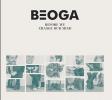 Beoga, “Before We Change Our Mind” • Remarking on a band’s “newfound maturity” can come off as a back-handed compliment, perhaps suggesting that because of youthful excess, some necessary elements weren’t in place for artistic (and/or commercial) success. Not so with Beoga. This Armagh quintet has from the get-go been one of the most inventive and high-energy groups to emerge in Irish music this century. Unquestionably, part of Beoga’s appeal was its fun-spirited, even whimsical turns – one minute a classic ceili band sound, the next New Orleans ragtime or gypsy jazz – to go along with an obvious command and precision.
Beoga, “Before We Change Our Mind” • Remarking on a band’s “newfound maturity” can come off as a back-handed compliment, perhaps suggesting that because of youthful excess, some necessary elements weren’t in place for artistic (and/or commercial) success. Not so with Beoga. This Armagh quintet has from the get-go been one of the most inventive and high-energy groups to emerge in Irish music this century. Unquestionably, part of Beoga’s appeal was its fun-spirited, even whimsical turns – one minute a classic ceili band sound, the next New Orleans ragtime or gypsy jazz – to go along with an obvious command and precision.
Now, with its first studio album in five years (and first release since their 2014 CD/DVD commemorating their 10th anniversary), Beoga has toned down the antics. “Before We Change Our Mind” throws into sharpest relief the band’s most admirable qualities: the double accordion pulse of Damian McKee and Sean Og Graham, who also wields a mean guitar; Liam Bradley’s dexterous piano-playing; Niamh Dunne’s agile fiddling and exquisite vocals (more of which later); and Eamon Murray’s solid bodhran and percussion.
And these individual strengths – to which a flair for composing should be added (all tunes are band originals, mainly written by Graham and McKee) – are, as always, magnified by Beoga’s cohesiveness and intelligent arrangements. “The Homestead Hero” set, for example, starts out with McKee and Graham on a pair of formidable-sounding jigs – Bradley in particular helping provide the build-up – before transitioning at full gallop into a climactic reel, “Jam and Jelly.” Tracks such as “The Convict” and “Before We Change Our Mind” (with its shifting time signatures) display Beoga’s rhythmic sophistication, while “Jump the Broom” reveals their capability to tone things down. Meanwhile, the presence of the Arco String Quartet on some of the tracks, especially “Aurora” and “Eochaid,” adds depth and refinement.
While Beoga’s song choices are historically eclectic – from Steely Dan’s “Dirty Work” to The Band/Rick Danko’s “Home Cookin’” to “Out of the Rain, Barney McShane” to traditional fare like “Our Captain Calls All Hands” – the arc here is not as sweeping. In fact, three of the four songs have a common, maritime-related thread: the traditional rouser “The Bonny Ship the Diamond” with a counterpoint of sorts in Tommy Makem’s “Farewell to Carlingford”; and “Like a Dime,” a landlubber’s-eye view of the sea by Eamon O’Leary (of The Alt and The Murphy Beds). The outlier is “Wexford Town,” penned by musician/singer/storyteller Patrick “Pecker” Dunne and based on his family’s difficult adjustment from Traveller life to town life. The big revelation – or, perhaps more accurately, a continuing revelation – is Niamh Dunne’s singing, aided in no small way by the arrangements – or lack of them as is the case with “Wexford Town,” which she does in a stark a cappella. She captures the swagger on “The Bonny Ship the Diamond” (with a cool four-tone riff and Graham and Murray’s brisk rhythm in the bargain), the sweet, sad nostalgia in “Like a Dime,” and the emotional tug-of-war at the core of “Farewell to Carlingford” (with a stately backing by Arco).
So call it maturity, or simply a more focused application of energy and talents – whatever, this “new” Beoga is an even stronger asset to the Irish music scene. [beogamusic.com]
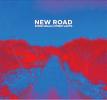 New Road, “Stone Walls & Street Lights” • There are a couple of antecedents to “Stone Walls & Street Lights”: One is from uilleann piper Leonard Barry’s 2014 recording, “The New Road,” which marked his return to playing after a lengthy absence; the other is “The Unwanted,” an album of Atlantic Fringe music (Ireland, Appalachia and adjacent places) by the trio of Californian Rick Epping, Seamie O’Dowd and Cathy Jordan – all of whom appeared on “The New Road.” So, here it is Barry, Epping (harmonica, concertina, banjo, jaw harp), O’Dowd (guitar, fiddle, mandolin) and fiddler Andy Morrow – who also played on “The New Road” – joining forces as the band New Road for this fascinating cross-stitching of Irish traditional and American folk roots music.
New Road, “Stone Walls & Street Lights” • There are a couple of antecedents to “Stone Walls & Street Lights”: One is from uilleann piper Leonard Barry’s 2014 recording, “The New Road,” which marked his return to playing after a lengthy absence; the other is “The Unwanted,” an album of Atlantic Fringe music (Ireland, Appalachia and adjacent places) by the trio of Californian Rick Epping, Seamie O’Dowd and Cathy Jordan – all of whom appeared on “The New Road.” So, here it is Barry, Epping (harmonica, concertina, banjo, jaw harp), O’Dowd (guitar, fiddle, mandolin) and fiddler Andy Morrow – who also played on “The New Road” – joining forces as the band New Road for this fascinating cross-stitching of Irish traditional and American folk roots music.
While Irish-Americana ventures abound these days (We Banjo 3, Grada, Dervish’s “Widening Gyre” album, to name a few), New Road works particularly well: Instead of self-consciously grafting together elements of the traditions, the band filters them through one another, creating a more consistent blend. In their version of “The Galway Shawl,” for instance, they take the song down to the southern Appalachians, escorted by O’Dowd’s slide guitar and Epping’s concertina and harmonica, redolent of a front-parlor harmonium – yet O’Dowd’s vocal keeps it linked to its Irish ancestry. There follows immediately a brilliant trio of Irish reels, with Epping switching to jaw harp and thus maintaining an Americana feel (mention should be made of the contribution here by bodhran player Johnny “Ringo” McDonagh – who provided the original inspiration for “Galway Shawl” when he, Epping and O’Dowd were part of Arcady – and guitarist Shane McGowan, not to be confused with the Pogues vocalist).
Epping’s harmonica playing is indisputably a centerpiece of the band, supplying rhythm, melody, or a good, bluesy improv. It’s the latter he dials up in a duet with O’Dowd’s guitar to lead into a simply marvelous medley of hop jigs (“Tommie Potts/Rocky Road to Dublin/John Kelly’s”), before joining up with Barry’s pipes and Morrow’s fiddle to grand effect. The harmonica – along with five-string banjo – also provides a bridge in the opening track from a rare version of “Road to Lisdoonvarna” to “Keep the Old Ark Rolling” (an American tune that he reconstructed with the aid of the classic hornpipe “Boys of Blue Hill” – got that?), which then segues into “The Blackbird,” a tune with many versions in both Irish and American traditions.
So much else to recommend the album: a waltz-and-jig combo (“McCaigue’s/The Orphan”) that easily could’ve been on an the “Hell on Wheels” soundtrack; a trio of infectious Sliabh Luachra slides; and Epping’s salty but sure vocals (a striking but winning contrast with O’Dowd’s) on “Saturday Night My Wife Died” and the concluding track “Down in the Home Town” – with a guest appearance by Jordan – on which the song morphs into an Irish-style reel and ends with the “shave-and-a-haircut” fanfare. A new road, certainly, but not an unfamiliar one, either. And that’s its charm. [newroadmusic.com]
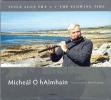 Micheál Ó hAlmhain, “Tuile Agus Trá – The Flowing Tide” • A three-time All-Ireland Fleadh champion on flute – but also versed in tin whistle and uilleann pipes – Dublin native Ó hAlmhain has been a mainstay on the teaching and organizational front of Irish music, including through involvement with Comhaltas Ceoltóirí Éireann and as creator of the Craiceann summer music school on the island of Inis Oirr, where he lives. He’s also had plenty of performance experience, though, such as with Ceoltóirí Laighean – a seminal 1970s band whose other members variously included Paddy Glackin, Mary Bergin, and John and James Kelly – the Irish Harp Orchestra and a group you may have heard of named The Chieftains.
Micheál Ó hAlmhain, “Tuile Agus Trá – The Flowing Tide” • A three-time All-Ireland Fleadh champion on flute – but also versed in tin whistle and uilleann pipes – Dublin native Ó hAlmhain has been a mainstay on the teaching and organizational front of Irish music, including through involvement with Comhaltas Ceoltóirí Éireann and as creator of the Craiceann summer music school on the island of Inis Oirr, where he lives. He’s also had plenty of performance experience, though, such as with Ceoltóirí Laighean – a seminal 1970s band whose other members variously included Paddy Glackin, Mary Bergin, and John and James Kelly – the Irish Harp Orchestra and a group you may have heard of named The Chieftains.
This 14-track album is a highlight film of sorts, the fruit of Ó hAlmhain’s many years of associations with masters like Seamus Ennis, Joe Rya,n and his fellow Ceoltóirí Laighean members and of his own historical research. “Tuile Agus Trá” includes a couple of O’Carolan pieces, “Murtach Mac Cana” and “Lady Maxwell,” and the 18th-century air “Eibhlín Gheal Chiúin,” collected by the eminent Armagh musician and scholar Edward Bunting. And then there are loads of reels and jigs, from the familiar (“Mug of Brown Ale,” “The Primrose,” “The Ivy Leaf”) to the less familiar (“Now She’s Purring,” “Gerdie Cumane’s Reel,” “Boys of the Hilltop”), as well as a pair of hornpipes (“The Cuckoo’s Nest/Alexander’s”), and medleys of slip jigs, slides and polkas.
Ó hAlmhain’s flute-playing harkens back to a somewhat earlier style – a touch gentler, perhaps, and rhythmic without being percussive – but you don’t have to be attuned to such elements to enjoy the album. He’s joined on all tracks by guitarist Steve Cooney, whose unconventional approach to accompaniment (often toggling between intensive rhythm and finger-picked melody or harmony) helps give each tune set a distinctive character. The CD’s introduction, written by Gearóid Ó hAllmhuráin, cites Igor Stravinsky’s quote that “music is the best means we have of digesting time:’ clearly, the five decades or so have been a delightful repast for Ó hAlmhain. [gael-linn.ie]
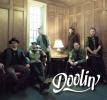 Doolin’ • This album has a lot going for it. Based in Toulouse, France, the six-member Doolin’ is one of the more successful and enduring European-based Celtic bands (as is Cara from Germany), having been around since 2005. Theirs is a pluralistic approach, confidently melding Irish traditional style and content with American roots and both folk and contemporary French material, some of it penned by brothers Wilfried (accordion, vocals) and Nicolas (guitar) Besse. For this recording – their first on the US Compass label – they have the talents of John Doyle as producer and contributor, along with other guest stars like Alison Brown, Jerry Douglas, Michael McGoldrick, and Mary (sister of Sharon) Shannon.
Doolin’ • This album has a lot going for it. Based in Toulouse, France, the six-member Doolin’ is one of the more successful and enduring European-based Celtic bands (as is Cara from Germany), having been around since 2005. Theirs is a pluralistic approach, confidently melding Irish traditional style and content with American roots and both folk and contemporary French material, some of it penned by brothers Wilfried (accordion, vocals) and Nicolas (guitar) Besse. For this recording – their first on the US Compass label – they have the talents of John Doyle as producer and contributor, along with other guest stars like Alison Brown, Jerry Douglas, Michael McGoldrick, and Mary (sister of Sharon) Shannon.
There’s also a compellingly stated raison d’etre for both album and band, as explained in the liner notes, which draw a line from the Great Famine-induced emigration to America through Irish music’s role – along with African and Native American music – in the creation of bluegrass, country, blues, even rock and pop.
That might cause a few arguments among musicologists, but the salient point is that once music travels, it’s never quite the same – and neither are the people it touches. Hence, we have “Le Jupon Blanc,” a Parisian jazz-inflected take on the traditional jig “The White Petticoat,” that showcases the band’s full capabilities, from the brothers Besse to Jacob Fournel (whistles), Guilhelm Cavaillé (fiddle), Josselin Fournel (bodhran) and and Sébastien Saunié (acoustic bass). In the same vein, “Le Dernier Kougn Amann,” Wilfried Besse’s instrumental ode to Breton pastry, is enriched by a straight-out-of-Nashville dobro backing from Douglas. While the arrangement for the pair of reels in “The Road to Gleanntán” is very much in the latter-day-Irish-revival format, the “Wind Her Up” 9/8 jig medley is more adventurous, opening quietly with Nicolas Besse laying down an arpeggio as a counter-rhythm for Fournel, and eventually the other melody players; the set builds through Doyle’s “Wind Her Up” and another trad tune, “The Wandering Spirit,” as Wilfried Besse adds electric piano and Hammond organ to fill out the spectrum.
Some imaginative adaptations abound: “Itinerant Singing Boy” is Nicolas Besse’s setting of “The Itinerant Singing Girl,” the Famine-themed poem by Oscar Wilde’s mother Jane Francesca, and Fournel and Saunié (along with Doyle on mandola and Ashley Davis on harmony vocals) affirm the sense of utter desolation in the lyrics. And there are covers of Bob Dylan’s “Ballad of Hollis Brown” and even a Francophone “Amsterdam,” Jacque Brel’s evocative portrait of maritime dissipation.
Some things don’t quite work. Wilfried Besse’s polka-driven “Sailing Across the Ocean,” in comparison with other material on the album, comes off rather lightweight. And while “Famine” – adapted by Sinead O’Connor, among others – has urgency and relevance, the hip-hop framework for the song just seems somewhat contrived. Lastly, no knock against the song itself, but do we really need yet another version of “Galway Girl” (even with Doyle and Brown assisting)?
Fortunately, the musicianship, creativity, and guiding vision of Doolin’ – both album and band – is more than enough to compensate for these shortcomings. [www.doolin.fr]
 Eddi Reader, “The Best of Eddi Reader” • Scottish-born Reader has had quite the long and multifaceted career over three-plus decades. Early on, she toured Europe with circus and performance artists, and at one point embarked on a brief acting career that included a part in the BBC comedy-drama “Your Cheatin’ Heart.” Among her collaborations have been new wave singer/diva Annie Lennox, English post-punk rockers Gang of Four, Ireland’s The Waterboys, and Scottish fiddler John McCusker. And, as this two-disc compilation shows, she has comported herself well in various genres, from twangy upbeat folk-rock to retro-soul to torch-song pop to stylish interpretations of Robert Burns and traditional material, as well as her own compositions.
Eddi Reader, “The Best of Eddi Reader” • Scottish-born Reader has had quite the long and multifaceted career over three-plus decades. Early on, she toured Europe with circus and performance artists, and at one point embarked on a brief acting career that included a part in the BBC comedy-drama “Your Cheatin’ Heart.” Among her collaborations have been new wave singer/diva Annie Lennox, English post-punk rockers Gang of Four, Ireland’s The Waterboys, and Scottish fiddler John McCusker. And, as this two-disc compilation shows, she has comported herself well in various genres, from twangy upbeat folk-rock to retro-soul to torch-song pop to stylish interpretations of Robert Burns and traditional material, as well as her own compositions.
If, like me, you’re not necessarily that familiar with Reader and the scope of her oeuvre, you would probably appreciate some context and background, and unfortunately, you won’t get it on “Best of.” There’s nothing that tells you about her short but quite successful career-launching foray with Fairground Attraction, which is represented here in the first three tracks, including the group’s hit “Perfect”; or her longstanding partnership with singer-songwriter Boo Hewerdine, such as on the endearingly empathetic “Patience of Angels,” as well as “Hummingbird” and the much-covered “Muddy Water”; or the special place in her heart for Robert Burns, enough to do a whole album of his works, from which is excerpted “My Love Is Like a Red, Red Rose,” “Leezie Lindsay,” “Ae Fond Kiss” and the charming “Willie Stewart.”
There are also fascinating, non-musical aspects of Reader’s life – such as her youth in the tough streets in Glasgow, or her research on her great-uncle, a prominent figure in Scotland’s unsuccessful attempt to replicate the Irish independence movement – that would have been enlightening to read about, without having to do an Internet search.
So then, all you have here are the songs, which is hardly the worst thing in the world. As with most any compilation album, of course, you’re likely to question some choices – especially given Reader’s prolific and diverse portfolio (I would’ve swapped out the cover of “Moon River” for her rendition of “Mary and the Soldier,” for instance, or included less of the soft, orchestrated stuff). But a couple of hours spent listening to 30 selections from one of Scotland’s most accomplished and far-ranging singers is time well spent. [eddireader.co.uk]

